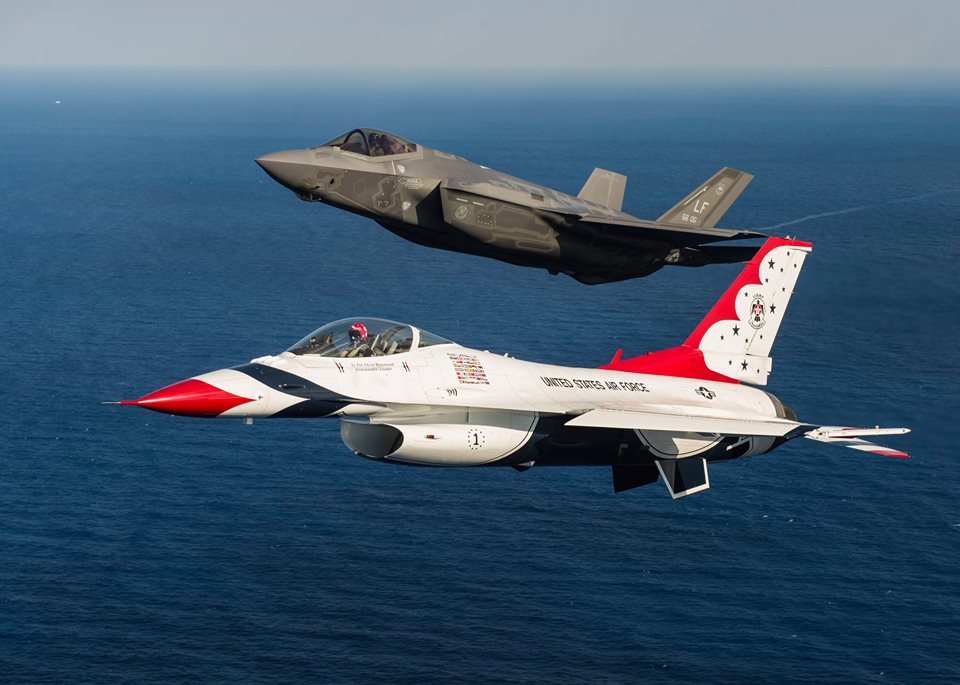Many have used this photo to criticize the F-35.
The cool shot in this post was shared by the Thunderbirds on their Facebook page.
It shows a USAF F-35A forming up on right wing of the F-16 #1 leader of the U.S. Air Force demo team. By looking at the configuration of the two aircraft and the AOA (Angle Of Attack) – the angle between the relative wind and a reference line on the airplane or wing – it’s pretty clear that the aircraft are flying at low speed, in an attempt to match the airspeed of a slow camera ship.
Noticing that the F-35 is flying with a higher AOA than the F-16, many people have used the photograph to criticize the Lockheed Martin’s fifth generation stealth jet as if the fact that the JSF (Joint Strike Fighter) was flying “nose high” is the umpteenth sign that the aircraft is a fiasco: criticizing the F-35 has become somehow “fashionable.”
Actually, it’s not the case. The photo just highlights that, given its wing type and aerodynamic characteristics, a clean F-16, with flaps down, is able to fly, under full control and levelled, in formation with the camera ship with a slightly lower AOA than an F-35.
That’s it.
Is this an F-35’s fault? Most probably not. The higher AOA does not mean the aircraft is “worst” than the Viper: the design of the JSF is such it can fly really high AOA (back in Oct. 2012, the aircraft was flown to the production limit of 50 degrees) whilst the F-16 is limited to below 29 degrees.
[Some basic stuff: lift depends on wing surface, air density, airspeed and AOA. To make it simple, if an aircraft wants to fly slower without descending, it must increase the AOA. Obviously, the AOA has a limit, a critical angle of attack beyond which the wing begins to stall]
Indeed, one of the strengths of the F-35 is the authority at significantly higher AOA than the F-16: a couple of months ago we published an interesting article with a first-hand account of what dogfighting in the F-35 looks like to a Norwegian pilot who has a significant experience with the F-16.
Among the things Major Morten “Dolby” Hanche underlined was the greater authority at high AOA and low airspeeds that gives the F-35 pilot the ability to point the nose of the airplane where he desires, enabling him to deliver weapons earlier than with the F-16, and giving him the ability to reduce the airspeed quicker than in the F-16.
Here’s how “Dolby” described the high AOA/low airspeed regime:
“Yet another quality of the F-35 becomes evident in this flight regime; using the rudder pedals I can command the nose of the airplane from side to side. The F-35 reacts quicker to my pedal inputs than the F-16 would at its maximum AOA (the F-16 would actually be out of control at this AOA). This gives me an alternate way of pointing the airplane where I need it to, in order to threaten an opponent. This «pedal turn» yields an impressive turn rate, even at low airspeeds. In a defensive situation, the «pedal turn» provides me the ability to rapidly neutralize a situation, or perhaps even reverse the roles entirely.”
Therefore, the troubled F-35 may have several flaws but the above photograph does not add any new or old one to the list.
Image credit: U.S. Air Force




















